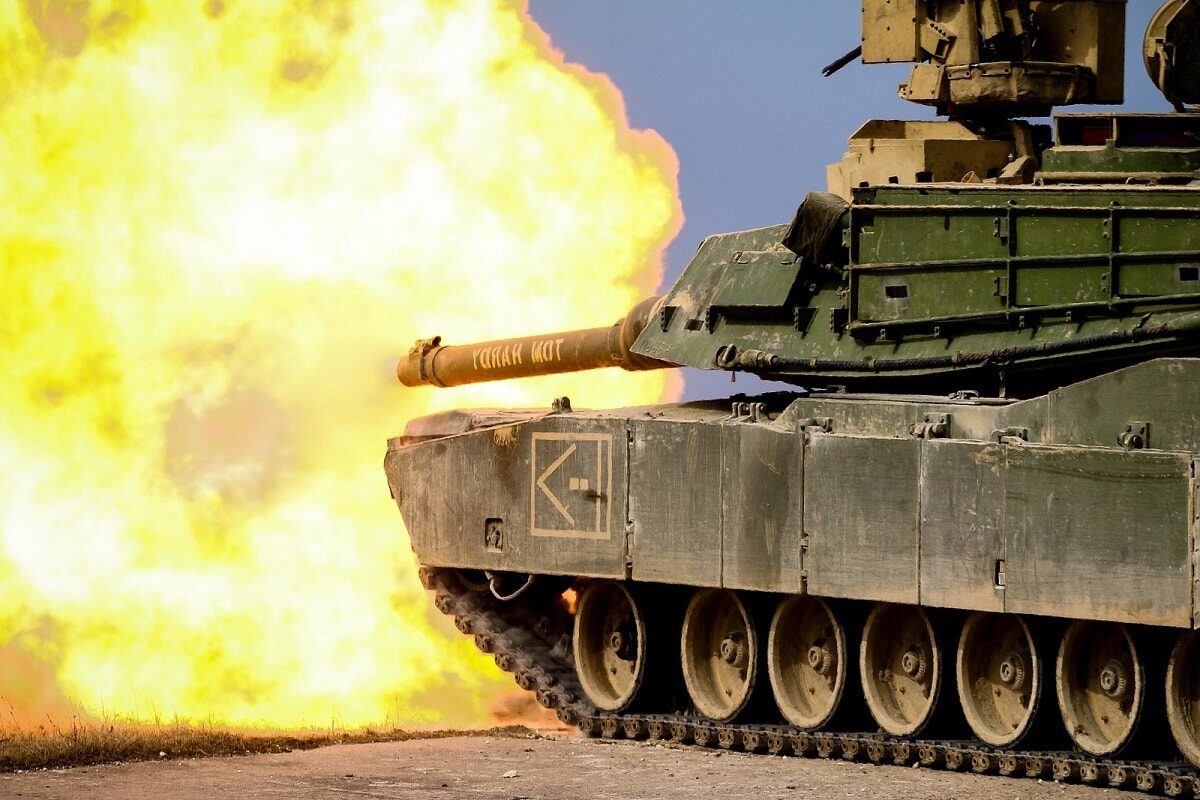The M1 Abrams tank is considered by many military and army experts as the best tank on Earth – hands down. But, we have to be frank here, the tank was developed in the 1970s and could be considered a little old when stacked up against newer tanks from Russia, Israel, and China. However, the M1 keeps getting some significant upgrades: A new version of the M1A2 Abrams main battle tank – which has been a US Army lynchpin for over forty years – is currently under development. The new version, the SEP version 4, or SEPv4, will feature several modernization upgrades – and should allow the Abrams to serve for decades still.
As the US Army Acquisition Support Center’s (ASC) website boasts: “The Abrams tank sends a message to those who would oppose the United States as to the resolve, capability, and might of the US Army.”
Why the M1 Abrams Is So Powerful
Despite the hyperbole and jingoism, the M1A2 Abrams is a fine weapons system, capable of giving adversaries pause. When first introduced in 1980, the M1A2 Abrams was ahead of its time as one of the first “third-generation” tanks to enter service anywhere in the world. Third-generation tanks feature composite armor and computer stabilized fire control systems – making them much more sophisticated than their second-generation predecessors. While resource-rich nations like the US and UK had unveiled third-generation tanks by the mid-80s, resource-poor nations like Ukraine and Bangladesh were still producing second-generation tanks in the 2010s, meaning the 1980 version of the M1A2 Abrams was more advanced than the tanks third-world countries are fielding today.
When the M1A2 Abrams was released, it featured an assortment of then-novel, and still-relevant, technologies. Most notable perhaps, is the M1A2’s top-secret armor system. “The Abrams is one of the only tanks in the world confirmed to use Chobham composite armor, the construction details of which remain a secret, several decades after its first design,” I wrote for 19FortyFive. While the precise specifics of Chobham armor are classified, we know that the design incorporates ceramic tiles encased inside a metal framework, set against a backing plate that has several layers of elastic. The Chobham ceramics are very, very hard, so that they may prevent shaped charges – known for killing tanks outfitted with more conventional armor – from penetrating the M1A2’s armor. The Chobham ceramics are also brittle. The reason: in the event a projectile does penetrate the ceramic, the Chobham’s brittleness will create a jagged entrance channel (rather than the smooth entrance channel created in conventional metal armor). The jagged entrance channel typically results in asymmetrical pressures on the penetrating charge, which can cause the charge to fail. Chobham armor has excelled under combat conditions; rarely are Chobham equipped tanks ever killed in the field, meaning the M1A2 Abrams has a world-class armor system.
Despite featuring advanced features since day one, the M1A2 has remained cutting edge because the Army continuously upgrades the platform. Emphasizing the tempo with which the Army modernizes its Abrams fleet: the SEPv3, which will soon become outdated when the SEPv4 is unveiled, is quite new. The SEPv3 is “the current production version of the Abrams” and was “scheduled for First United Equipped in FY2020,” according to Army ASC. Meaning, the SEPv3 wasn’t unveiled until fiscal year 2020, when it was undoubtedly an advanced platform. “The U.S. M1 Abrams is the most advanced main battle tank in the world. And the M1A2 SEPv3 Abrams is the most advanced version of the weapon system,” my colleague Stavros Atlamazoglou wrote. “The SEPv3 upgrade brought to the M1A2 Abrams additional electrical power from an auxiliary power unit, upgrades its network capabilities, gave it stronger armor, including the explosive reactive armor mountings, for greater protection against strikes of all types provided an improved ammo data link to interface with advanced ammunition, such as airburst munitions, and reduced the maintenance required to upkeep the main battle tank.”
The SEPv3 was considered a significant upgrade over the SEPv2, which applied hard lessons learned after years of combat in the Middle East; the SEPv3 “rectifies many of the space, weight, and power issues identified during Operation Iraqi Freedom,” Army ASC said, “it is the most reliable Abrams tank ever produced.”
A New M1?
Still, the Army is now urgently engaged in producing the SEPv3’s successor, the SEPv4.
The SEPv4 was slated to begin testing last year. Naturally, the Army is withholding certain design specifics from the public, but a general sense of what the SEPv4 will include is emerging. Wearethemighty.com reported that the SEPv4 will feature “new laser rangefinder technology, color camera, integrated on-board networks, new slip-rings, advanced meteorological sensors, ammunition data links, laser warning receivers and a far more lethal, multi-purpose 120mm tank round.” Army ASC confirmed that the new tank would feature third generation (3GEN) Forward-Looking Infrared (FLIR) technology. FLIR will allow SEPv4 crews to conduct missions at night. “FLIR technology detects heat and creates images, allowing troops to “see” through darkness, smoke, rain, snow and fog,” Raytheon states.
3GEN FLIR, especially, provides “high-definition resolution and magnification with increased precision from much greater distances.” 3GEN FLIR isn’t just about lethality – seemingly paradoxically, the tech is also about safety. “3GEN FLIR will enable Soldiers to detect, recognize, and identify military targets from civilian targets,” Army ASC says, while also helping Abrams crews with “fratricide avoidance.”
So, with 3GEN FLIR on board, the SEPv4 should be even more lethal – yet safer – than its predecessors.
Harrison Kass is the Senior Defense Editor at 19FortyFive. An attorney, pilot, guitarist, and minor pro hockey player, he joined the US Air Force as a Pilot Trainee but was medically discharged. Harrison has degrees from Lake Forest College, the University of Oregon, and New York University. He lives in Oregon and listens to Dokken. Follow him on Twitter @harrison_kass.

